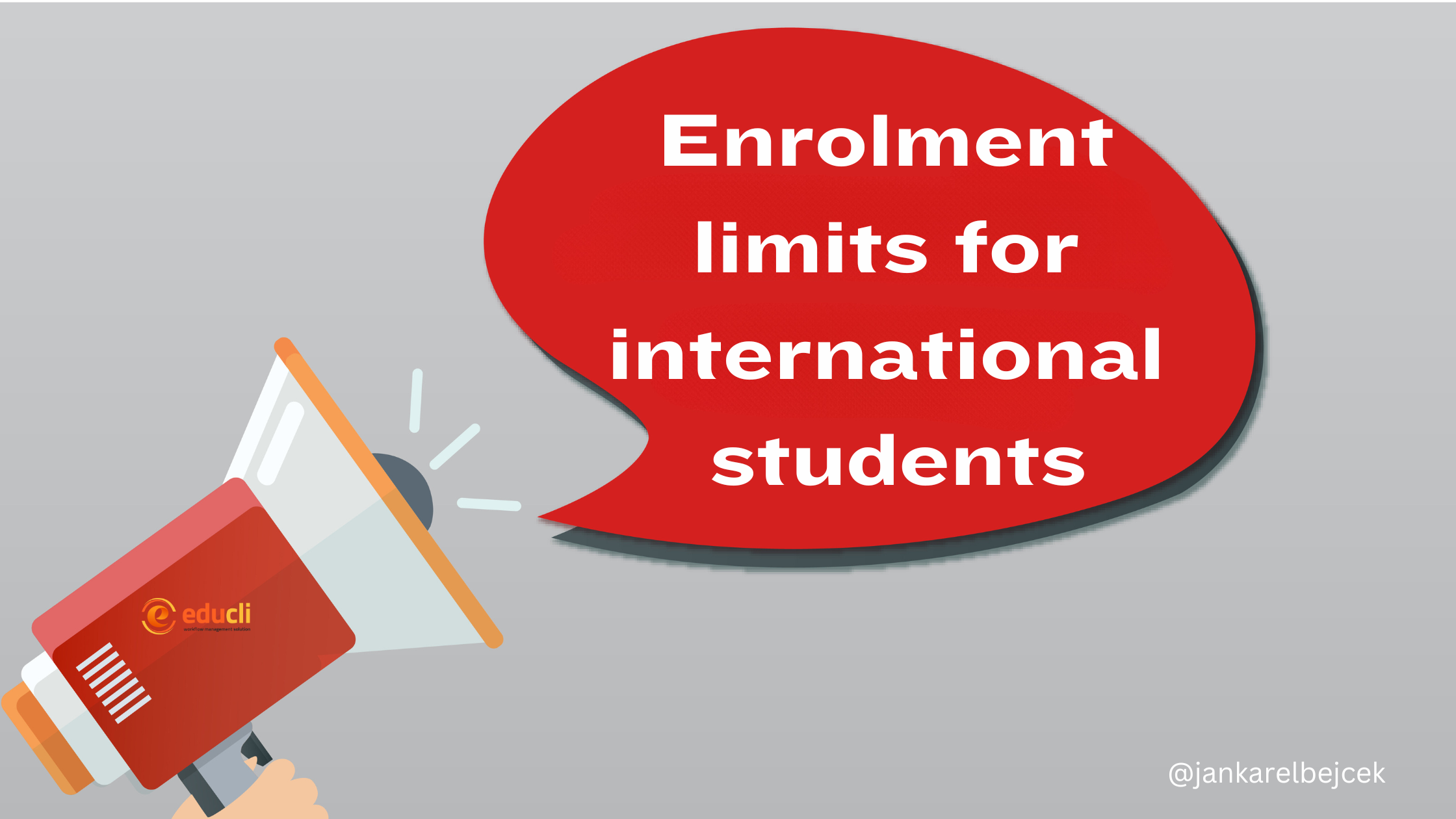Australian Government introduced enrolment limits for international students
Starting in 2025, the Australian Government will impose enrolment limits on new overseas students as part of its ongoing efforts to manage the international education sector. This significant policy shift will see the Department of Education implementing specific data definitions that underpin these limits, aimed at maintaining a balanced and sustainable education system.
Key Definitions
- Provider Limit: This term refers to the maximum number of new overseas student commencements (NOSCs) each educational provider is allowed to enrol.
- New Overseas Student Commencements (NOSCs): An international student is considered a NOSC when they arrive in Australia and begin their first non-exempt course at their initial provider. This status also applies each time a student transfers to a non-exempt course at a different institution. However, students who change courses within the same provider or start a subsequent course at the same provider immediately after completing the first are not counted as additional NOSCs.
Exemptions from the Provider Limit
Several categories of students are exempt from the national planning level and provider limit, including:
- School students
- Students enrolled in standalone English Language Intensive Courses for Overseas Students (ELICOS)
- Higher degree by research students (e.g., PhD or Master’s by Research)
- Non-award students, such as short-term exchange students
- Australian Government-sponsored scholars and visa holders
- Key partner foreign government scholarship holders
- Other Department of Foreign Affairs and Trade (DFAT) or Defence-sponsored students
- Students involved in Australian transnational education or twinning arrangements
- Students from the Pacific and Timor Leste
How the System Will Operate
Each provider will be allocated a set number of NOSCs in the Provider Registration and International Student Management System (PRISMS). Exemptions apply to students moving from non-award courses to non-exempt courses, with the latter counting towards the provider’s limit when the student begins the non-exempt course.
For example, a student who transitions from a non-award pathway course to a bachelor’s degree within the same institution will only count towards the limit once they commence the bachelor’s course.
Counting NOSCs in PRISMS
NOSCs are tracked through PRISMS, where they are counted when a student’s Confirmation of Enrolment (CoE) moves to a “Studying” status. It’s important to note that NOSCs are not highlighted in the data released by the Department of Education online. The “New Student” filter available on the Department’s website only includes students appearing in PRISMS for the first time.
Identifying a NOSC: A Step-by-Step Process
The Department of Education follows a detailed process to identify which CoEs constitute a NOSC:
- Identify all CoEs that commenced within the calendar year for a provider.
- Verify that the actual start date of the CoE is within the calendar year.
- Determine whether the CoE belongs to the Higher Education or VET sectors.
- If not, exclude the CoE.
- Check if the CoE is for a Higher Degree by Research course.
- If yes, exclude the CoE.
- Confirm whether the student is from the Pacific or Timor Leste.
- If yes, exclude the CoE.
- Verify if the student studied in a higher education or VET course at the same provider in the last 12 months and hasn’t studied at another provider.
- If yes, exclude the CoE.
- If none of the above criteria apply, count the CoE as a NOSC.
The Department plans to release more detailed guidance on how Student Course Variations (SCVs) will impact the counting of NOSCs.
Accessing NOSC Data
Currently, PRISMS does not offer a report specifically for NOSCs, but providers can approximate this data by exporting the “CoE and Student Export” with the relevant date range and applying the outlined identification steps.
Further Information
For more detailed guidance on provider limits and the upcoming changes, visit:
- Supporting a Managed System for a Sustainable Sector – Department of Education, Australian Government
- Factsheet – Implementing Provider Limits in PRISMS – Department of Education, Australian Government
Additional information will be provided as it becomes available.
studentcaps hashtagstudyinaustralia hashtaginternationaleducation hashtageducli





Leave A Comment